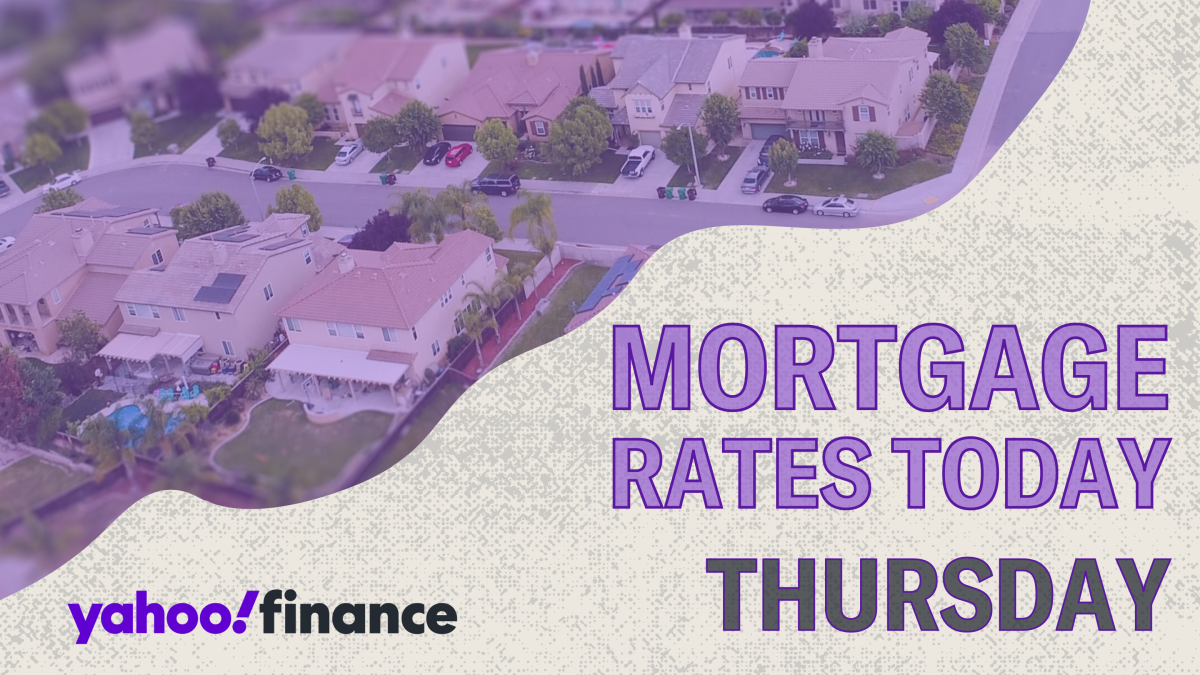Mortgage rates have increased again this week, though the shifts are relatively small. According to Freddie Mac, the average 30-year fixed rate has risen by two basis points to 6.93%, and the 15-year fixed rate is up one basis point to 6.14%.
So, why are mortgage interest rates still so high? First, the market is waiting to see how Trump’s second term will impact the U.S. economy and housing market. Second, mortgage rate trends tend to follow the 10-year Treasury yield, which has been rising for the last month. Third, it looks unlikely that the Federal Reserve will cut the federal funds rate at its January meeting. All this to say — don’t expect rates to plummet anytime soon. If you want to buy a house sooner rather than later, holding out for lower rates might not be worth it.
Dig deeper: Mortgage rates jump again, approaching 7% barrier
Here are the current mortgage rates, according to the latest Zillow data:
-
30-year fixed: 6.74%
-
20-year fixed: 6.69%
-
15-year fixed: 6.05%
-
5/1 ARM: 6.69%
-
7/1 ARM: 6.64%
-
30-year VA: 6.17%
-
15-year VA: 5.69%
-
5/1 VA: 6.18%
Remember, these are the national averages and rounded to the nearest hundredth.
Learn more: 5 strategies to get the lowest mortgage rates
Here are today’s mortgage refinance interest rates, according to the latest Zillow data:
-
30-year fixed: 6.79%
-
20-year fixed: 6.59%
-
15-year fixed: 6.07%
-
5/1 ARM: 6.19%
-
7/1 ARM: 6.78%
-
30-year VA: 6.18%
-
15-year VA: 5.84%
-
5/1 VA: 6.13%
As with the purchase mortgage rates, these are national averages we’ve rounded to the nearest hundredth. Refinance rates can be higher than purchase mortgage rates, but as you can see above, that isn’t always the case.
Yahoo Finance has a free mortgage payment calculator to help you see how various mortgage rates will impact your monthly payments.
Our calculator goes even deeper by including factors like homeowners insurance and property taxes in your calculation. You can even add private mortgage insurance costs and HOA dues if they apply to you. These monthly expenses, along with your mortgage principal and interest rate, will give you a realistic idea of what your monthly payment could be.
A mortgage interest rate is a fee for borrowing money from your lender, expressed as a percentage. There are two basic types of mortgage rates: fixed and adjustable rates.
A fixed-rate mortgage locks in your rate for the entire life of your loan. For example, if you get a 30-year mortgage with a 6% interest rate, your rate will stay at 6% for the entire 30 years. (Unless you refinance or sell the home.)
An adjustable-rate mortgage keeps your rate the same for the first few years, then changes it periodically. Let’s say you get a 5/1 ARM with an introductory rate of 6%. Your rate would be 6% for the first five years and then the rate would increase or decrease once per year for the last 25 years of your term. Whether your rate goes up or down depends on several factors, such as the economy and U.S. housing market.
At the beginning of your mortgage term, most of your monthly payment goes toward interest. As time passes, less of your payment goes toward interest, and more goes toward the mortgage principal or the amount you originally borrowed.
Dig deeper: Adjustable-rate vs. fixed-rate mortgage — Which should you choose?
Two categories determine mortgage rates: ones you can control and ones you cannot control.
What factors can you control? First, you can compare the best mortgage lenders to find the one that gives you the lowest rate and fees.
Second, lenders typically extend lower rates to people with higher credit scores, lower debt-to-income (DTI) ratios, and considerable down payments. If you can save more or pay down debt before securing a mortgage, a lender will probably give you a better interest rate.
What factors can you not control? In short, the economy.
The list of ways the economy impacts mortgage rates is long, but here are the basic details. If the economy — think employment rates, for example — is struggling, mortgage rates go down to encourage borrowing, which helps boost the economy. If the economy is strong, mortgage rates go up to temper spending.
With all other things being equal, mortgage refinance rates are usually a little higher than purchase rates. So don’t be surprised if your refinance rate is higher than you may have expected.
Two of the most common mortgage terms are 30-year and 15-year fixed-rate mortgages. Both lock in your rate for the entire loan term.
A 30-year mortgage is popular because it has relatively low monthly payments. But it comes with a higher interest rate than shorter terms, and because you’re accumulating interest for three decades, you’ll pay a lot of interest in the long run.
A 15-year mortgage can be great because it has a lower rate than you’ll get with longer terms, so you’ll pay less in interest over the years. You’ll also pay off your mortgage much faster. But your monthly payments will be higher because you’re paying off the same loan amount in half the time.
Basically, 30-year mortgages are more affordable from month to month, while 15-year mortgages are cheaper in the long run.
According to 2023 Home Mortgage Disclosure Act (HMDA) data, some of the banks with the lowest median mortgage rates are Citibank, Wells Fargo, and USAA. However, it’s a good idea to shop around for the best rate with not just banks, but also credit unions and companies specializing in mortgage lending.
Yes, 2.75% is a fantastic mortgage rate. You’re unlikely to get a 2.75% rate in today’s market unless you take on an assumable mortgage from a seller who locked in this rate in 2020 or 2021, when rates were at all-time lows.
According to Freddie Mac, the lowest-ever 30-year fixed mortgage rate was 2.65%. This was the national average in January 2021. It is extremely unlikely that rates will dip this low again anytime soon.
Some experts say it’s worth refinancing when you can lock in a rate that’s 2% less than your current mortgage rate. Others say 1% is the magic number. It all depends on what your financial goals are when refinancing and when your break-even point would be after paying refinance closing costs.
EMEA Tribune is not involved in this news article, it is taken from our partners and or from the News Agencies. Copyright and Credit go to the News Agencies, email news@emeatribune.com Follow our WhatsApp verified Channel




